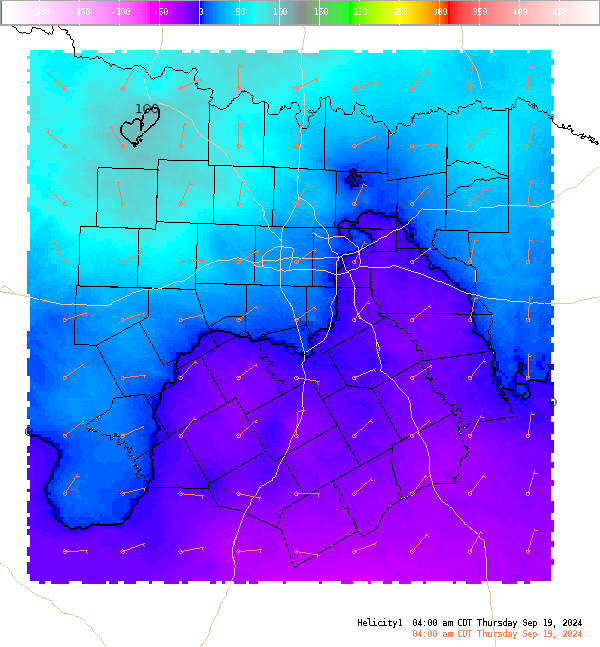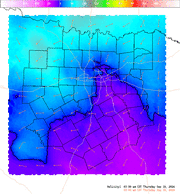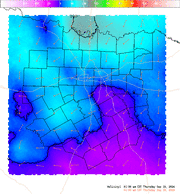
An atmospheric river will bring heavy rainfall to lower elevations of California this week, and heavy snow to the Sierra Nevada mountains. Flash flooding, some of which may be locally considerable, will be a concern on the western foothills of the Sierra Nevada mountains through Tuesday. Landslides, rockfalls and mudslides are possible in the Southern California mountains. Read More >
Fort Worth/Dallas, TX
Weather Forecast Office
|
|
4 Panel Display | Animated Loop Helicity (0-1 Km) This is the 0-1 km (approximately 0-3,000 Ft. AGL) storm relative helicity which is a measure of the amount of low level wind shear available for tornadogenesis. This is not a good indicator of supercell potential which is related more strongly to 0-6 KM vertical shear. Values greater than 100 m**2/s**2, do suggest an increased threat of tornadoes provided a supercell is present. Larger values are generally better, but there are no clear "boundaries" between non-tornadic and significant tornadic supercells. The arrows indicate the approximate right supercell storm motion using the Bunkers technique. |
Current Hazards
National Outlooks
Tropical
Local Storm Reports
Storm Reports (Graphical)
Submit Storm Report
Tornado Warnings
Severe Thunderstorm Warnings
Flash Flood Warnings
Forecasts
Forecast Discussion
Graphical Forecast
Aviation Forecasts
Fire Weather
Hazard Planner
N. Texas Convective Parameters
US Dept of Commerce
National Oceanic and Atmospheric Administration
National Weather Service
Fort Worth/Dallas, TX
3401 Northern Cross Blvd.
Fort Worth, TX 76137
817.429.2631
Comments? Questions? Please Contact Us.





